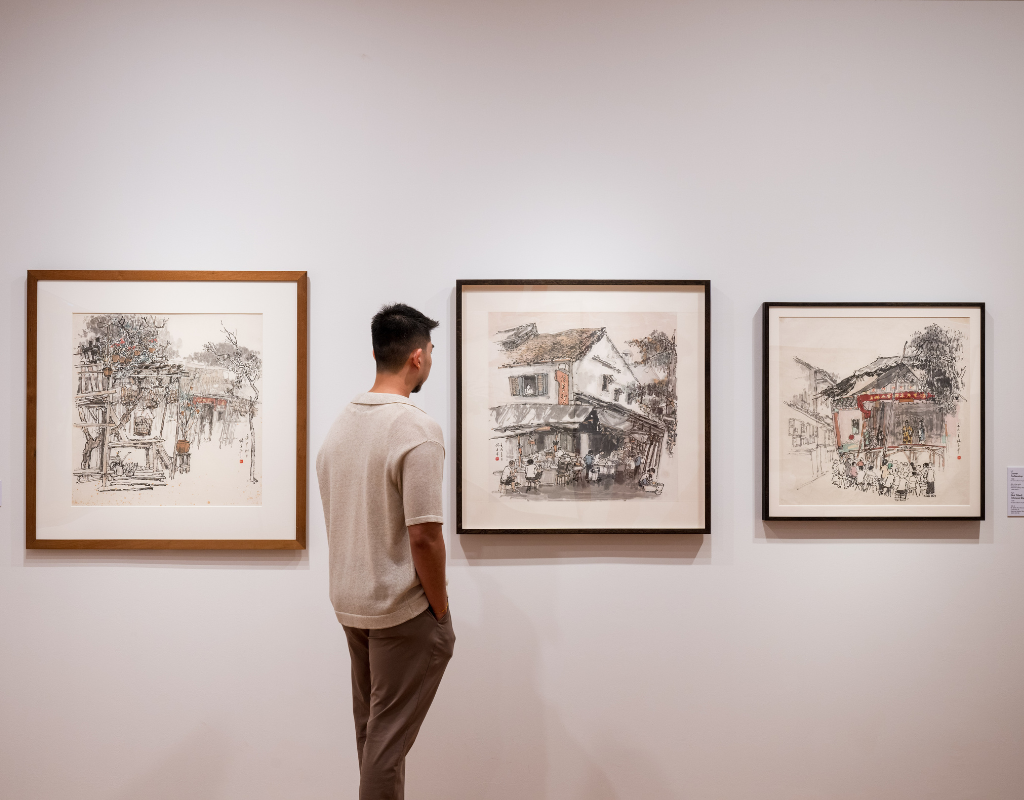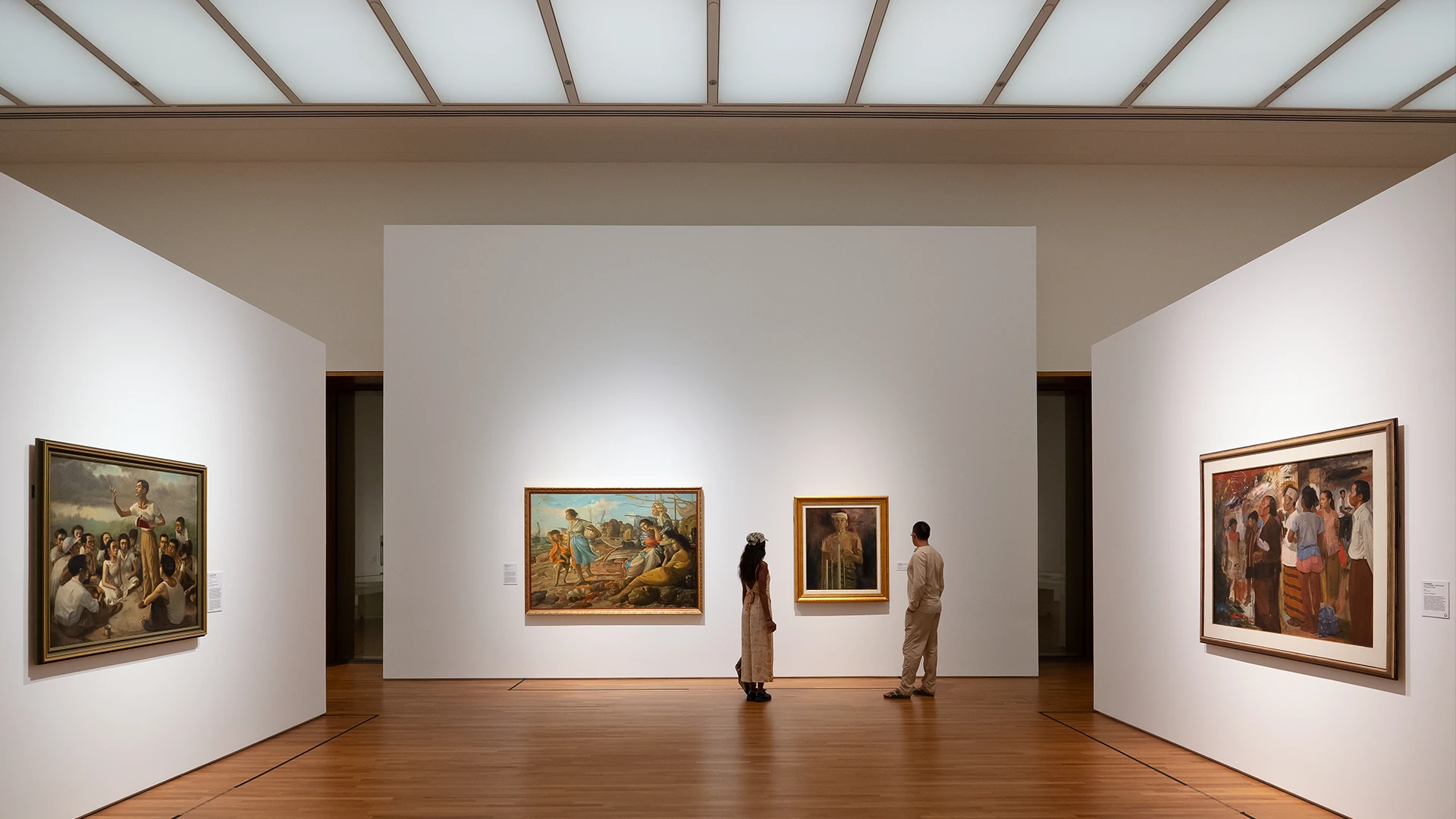How did World War II impact the works and thinking of Southeast Asian Artists?
Driven by notions of the nation, internationalism and progress, artists from Southeast Asia continued to examine the role of art in the midst of an increasingly complex environment. Southeast Asia experienced World War II, the struggle for independence and the rise of post-war nationalism in close succession. As fledgling nation-states came into being in an unstable political atmosphere, alliances like the Association of Southeast Asian Nations (ASEAN) became a platform for regional cooperation. The subsequent Cold War divided the countries and this, in turn, influenced artistic directions, both directly and indirectly.
Artists responded to nation-building in various ways. During and after World War II, artists documented political events and issues, and engaged with Social Realism to awaken feelings of nationalism and spur people into action. At the same time, artists were also eager to participate in international trends and exhibitions where abstract art held sway. These artists explored formal concerns such as colour, shapes and composition. Simultaneously, they also turned to their roots for inspiration by reinvestigating local traditions, materials and subject matter.
As the Cold War reached its height, new social-political phenomena like the rise of student movements and popular revolts against authoritarian rule became widespread. A new generation politicised the function of art and the responsibility of the artist.
-
When: Ongoing - Where: UOB Southeast Asia Gallery









